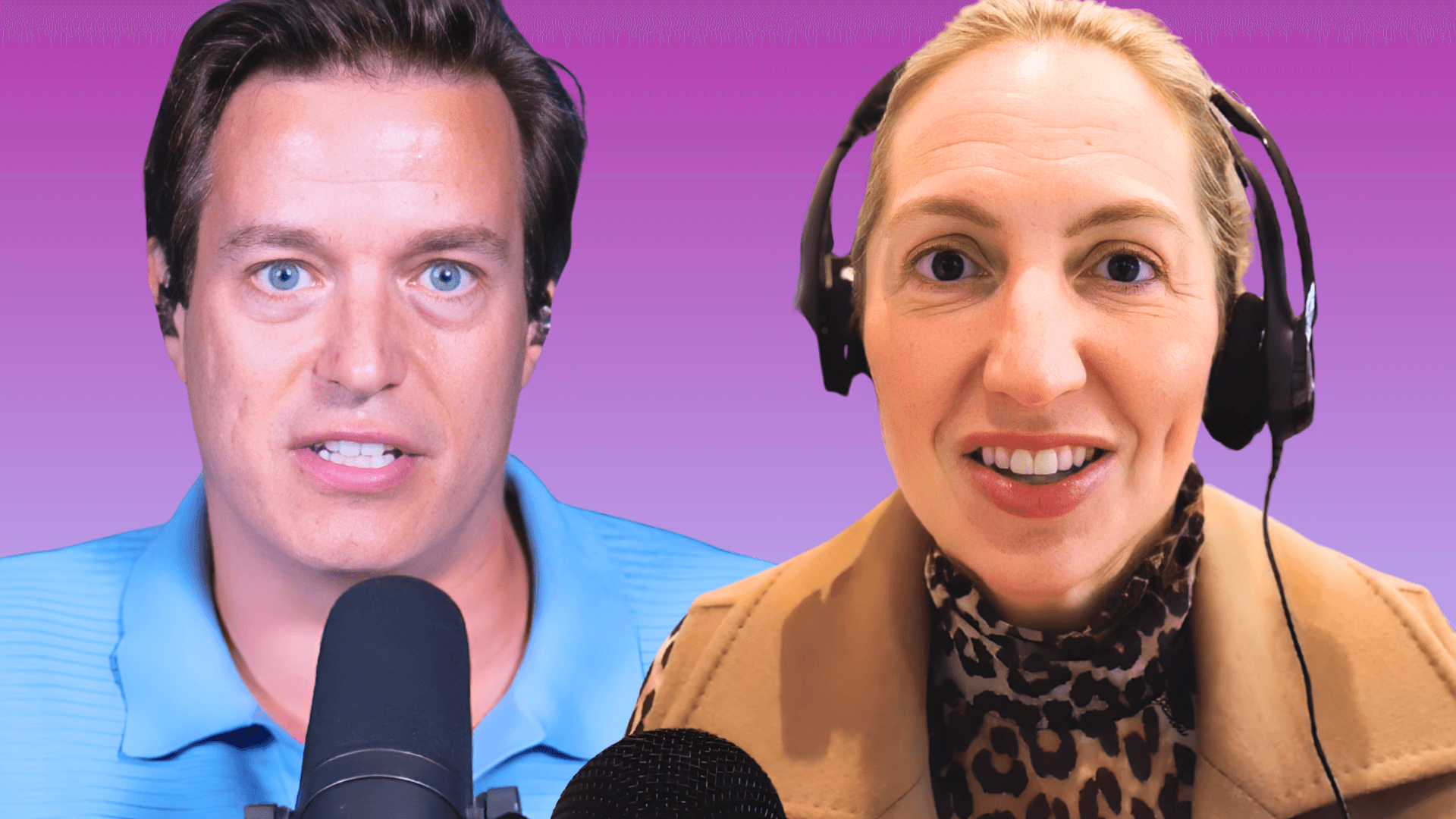Pat Flynn (@patflynn) helps entrepreneurs build and grow successful online businesses with his book Will It Fly?: How to Test Your Next Business Idea So You Don’t Waste Your Time and Money and the Smart Passive Income podcast and blog.
The Cheat Sheet:
- An entrepreneur needs to develop a mindset of steely resolve to overcome resistance from family, friends, not-friends, and — most important — him or herself.
- How do you assure your worried spouse you’re mitigating risk for a new venture and not condemning your family to bankruptcy (without falling into the switchtracking trap)?
- Would you pass The Airport Test?
- Use these four quadrants to determine what makes (or would make) your life awesome.
- Try the 3 Ps Exercise to make sure your business plan is worth pursuing before wasting your time and money.
- And so much more…
[aoc-subscribe]
Does your business idea have merit? Will it succeed in the market you’re trying to serve, or will it just be a waste of time and resources? Is it a good idea for you? In other words, will it fly?
When he was laid off from his dream job a few years ago, architect Pat Flynn discovered online business — and it was one of the best things that ever happened to him. On episode 483 of The Art of Charm, he tells us how he’s since helped other people go into business for themselves while avoiding half-baked ideas, misguided theories, and other forms of self-delusion through the Smart Passive Income podcast and blog and now his new book Will It Fly?: How to Test Your Next Business Idea So You Don’t Waste Your Time and Money. Prepare for liftoff and enjoy!
More About This Show
Getting started as an entrepreneur involves developing a mindset of steely resolve — especially when other people don’t believe in you and, for whatever reason, try to talk you out of it. Some may just be trying to protect you. Some may be miserable in their own endeavors and just want the company. Some may think your ideas are ridiculous and simply can’t understand how you can make a sustainable living out of them.
The universe (for lack of a better term to describe everything and everyone) will resist you. Your friends, your family, your not-friends, and even your own brain will cast doubt on your ambitions and give you a thousand-and-one reasons why you’ll never be successful in whatever business you’re trying to set in motion. It’s a test a lot of entrepreneurs unfortunately don’t pass. But understanding the motivations behind the shadows cast your way will go a long way toward helping you survive the gauntlet.
Sometimes you’ll get feedback from critics that will make you second-guess your direction — and sometimes you have to make the difficult admission the feedback has merit. But how can you tell the difference between respectful, legitimate advice and contentious trolling?
“It’s important to listen,” says Pat Flynn, author of Will It Fly?: How to Test Your Next Business Idea So You Don’t Waste Your Time and Money. “It doesn’t mean you have to react right away, and that’s another thing that I make sure I don’t do, because I used to be that way. I used to have people comment about something in a blog post and they’d point out something that maybe they didn’t agree with — and I’d just erase it right away…but then I realized that sometimes you just have to sleep on it and just let those nerves calm down a little bit before you can start thinking about something rationally.”
Concerns from your spouse may be especially trying to your resolve. After all, they’re in the same boat as you if your business venture fails. They want to be assured you’ll still have a home in a year. They want to know your kids will still be able to attend a good school. They want a nest egg and security for the future. So when they express these concerns, it’s important to not only have a solid business plan so you can reassure your spouse on all counts, but to avoid taking this as a lack of confidence on their part in your ability to be a provider. This leads to a common phenomenon known as switchtracking, where feedback from one party generates a reaction from the other that completely changes the subject (discussed in detail on NPR’s Hidden Brain Episode 1: Switchtracking).
The spouse is really saying, “I’m worried about the consequences of the business failing, so I want to be sure we’re as careful as possible.” What you may be hearing is, “I don’t believe you can make the business succeed, and we’re going to be homeless in a year.” You’re not even having the same conversation at this point. So the way to avoid falling into this switchtracking trap is to be aware of it (as you are now if you weren’t before), and just be really clear in communicating every step of the way with your spouse. If one party starts getting really defensive at any point of the conversation, acknowledge switchtracking for what it is and refocus that conversation back to a more constructive course.
So how can you tell the difference between a solid business idea that will ensure a secure future and one that will, to your spouse’s alarm, bankrupt your family and leave you destitute? Before Pat Flynn wrote Will It Fly?, and before he started helping people discover steady revenue streams with the Smart Passive Income podcast and blog, he had to go through some hard times himself.
“I actually got laid off in 2008, coming from the architecture world,” says Pat. “My whole dream my whole life growing up was to become an architect. That’s what I always wanted to do ever since I came out of the womb and started playing with LEGOs. I got my dream job out of college working at this amazing architecture firm in the Bay Area. Got laid off and just didn’t really know what was going to happen, because I didn’t have a Plan B.”
Luckily, Plan B found Pat by way of a blog he began before his unemployment. The blog centered around the LEED exam, a new and acclaimed certification within the industry encouraging sustainable, environmentally friendly architecture designs. “The blog’s purpose was to organize my study notes,” says Pat. “Apparently other architects were passionate about the LEED certification too because, unknowingly at first, my blog became quite popular. Presto! My first niche website was born.”
With the success of this business and what he was learning through trial and error about being an online entrepreneur, Pat started sharing these lessons with others through the Smart Passive Income podcast and blog, through keynote speeches, and now in his first book Will It Fly?
“The reason why I love to share what I do is because of what this online business stuff has allowed me to do, which is spend most of my time with my kids at home. My family’s the number one most important thing to me…it’s an amazing lifestyle. And a lot of people love building businesses to travel, to buy fancy cars, and buy these amazing houses. For me, it’s all about family. Whatever your reason for doing what you do, you should be creating something to help you make that happen. And that’s what I teach.”
The Airport Test and the Four Quadrants
One way of finding out if you’re on the right path is to take The Airport Test (borrowed from Gary Keller and Jay Papasan of The ONE Thing fame). Imagine you’re at an airport and you run across an old friend with whom you’ve lost touch. How would you respond when asked how your life’s going?
“What would make you, five years from now, say that life’s awesome?” asks Pat.
To determine this, Pat has an exercise we can try. Take a sheet of paper and fold it into four quadrants. Title each of the quadrants with the four most important categories in your life. For Pat, these are:
- Family
- Professional
- Finances
- Health
In each of those quadrants, write down what would make you honestly respond “life’s awesome” when faced with The Airport Test.
“For instance,” says Pat, “In Family I wrote down ‘April, my wife and I, are 11 years into our marriage and we’re both madly in love with each other, still. I get to go with April to school, drop off and pick up the kids every day. I cook — we have dinner as a family almost every day of the week. I’m 100% present with my family mentally. When I’m with them physically, we take vacations every couple months. The kids are interested in entrepreneurship.’ Those are what I envision as reasons why I would say ‘Life is awesome’ five years from now.”
As you write down your reasons in each quadrant (with categories that may vary from Pat’s), you have a physical reminder of what it is you’re working toward, which informs business and personal decisions you make going forward. Sometimes you may get opportunities that would swell the aims of one quadrant while decimating another, but seeing these four quadrants as part of a greater whole keeps you focused on the opportunities that serve the big picture.
The Three Ps
Even when you’ve got the right mindset to pursue what you feel is a strong business idea without letting negative influences sidetrack your ambition, there are practical things to consider before you actually start pouring time and money into it. Pat says you should keep these Three Ps in mind as you seek your target market:
- Places: Where does your market exist?
- People: Who are the other influencers serving this market?
- Products: What are people in this market paying for already?
By doing this exercise, you begin to understand where your audience is, the people who you can potentially partner with (or could be helpful with your launch), and the products for which you could become an affiliate.
“Nobody’s going to see you unless you stand out in this market,” says Pat, “and how do you know where to stand if you don’t even know what’s there?” This exercise should get you headed in the right direction.
Listen to this episode of The Art of Charm in its entirety to learn the number one way to validate your business idea, understand the Customer P.L.A.N., implement the Google Sniper Search Trick into your market research strategy, make use of the Validation Formula to test the sustainability of a business hypothesis, and more.
THANKS, PAT FLYNN!
Resources from this episode:
- Will It Fly?: How to Test Your Next Business Idea So You Don’t Waste Your Time and Money by Pat Flynn
- The Smart Passive Income blog and podcast
- How to Win Friends & Influence People by Dale Carnegie
- Hidden Brain Episode 1: Switchtracking
- The 4-Hour Workweek: Escape 9-5, Live Anywhere, and Join the New Rich by Tim Ferriss
- The ONE Thing: The Surprisingly Simple Truth Behind Extraordinary Results by Gary Keller and Jay Papasan
You’ll also like:
On your phone? Click here to write us a well-deserved iTunes review and help us outrank the riffraff!




